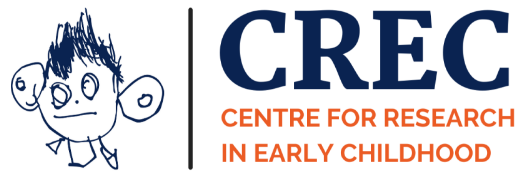Mosaic Listening: Navigating Ethical Entanglements through Diffractive Practice
by Kate Dudley
The ways in which young children express themselves are as unique as they are, with each child weaving together a blend of experiences, relationships, and interactions that shape their identity. My doctoral research examines how early years practitioners can ethically engage with children’s expressions of mental gender and the significance of this for early years development. Working with a group of children and practitioners in a reception classroom, my study explores what it means to create a listening space for children’s voices. Using a Mosaic approach (Clark & Moss, 2001), along with nomadic ethics (Braidotti, 2014) and diffractive practices (Barad, 2007), my research aims to help practitioners develop deeper, more responsive ways of tuning into a child's gender expression (Warin, 2023).
Why This Research Matters
In early years settings, there’s an increasing focus on creating inclusive spaces where every child can express themselves freely and authentically. UK policies, such as the Equality Act (2010) and the Early Years Foundation Stage framework (DfE, 2023), emphasise inclusivity and the need to prevent discrimination in educational environments. However, when it comes to gender expression (Warin, 2023), gaps remain in how practitioners are equipped to support children’s full, unique expressions. My research addresses this gap by offering a Mosaic approach—a multi-contextualised way of listening that is ethically responsive and focused on the child’s unique phenomena.
Child using painted sticks whilst talking about complex friendships and family.
The Mosaic Approach: Listening with Layers
At the heart of my study is a commitment to multi-contextual listening, listening to children in ways that recognise the richness of their individual experiences. Using techniques such as photo-elicitation, digital cameras, and observations of play, children were given diverse avenues to express themselves naturally. This approach, known as Mosaic listening (Clark & Moss, 2001), centres children’s voices, ensuring they are heard and respected.
By grounding the study in ethico-onto-epistemology (Barad, 2007), my research highlights the idea that knowledge is co-created through intra-actions between practitioners, children, and the surrounding environment. Practitioners are not neutral observers; their identities, beliefs, and actions shape how they engage with each child. Recognising this helps build an ethical foundation that positions the child’s voice as a partner in this journey of exploration.
Two children ‘making a home fit for a King’.
Nomadic Ethics: Staying Flexible and Responsive
Inspired by nomadic ethics (Braidotti, 2014), this research frames ethics as an ongoing responsibility, requiring flexibility and responsiveness in practice. Nomadic ethics asks us to understand that we are all in a constant state of becoming. Each encounter with a child involves shifting identities and relationships, calling for practitioners to continuously reflect on their own biases and power dynamics. By incorporating an ethic of care (Taggart, 2015) into every interaction, practitioners become more aware of how their own experiences influence the child’s phenomena. This awareness enables practitioners to tune into each child’s unique way of expressing gender while remaining conscious of how their interpretations are shaped by their own perspectives.
A group discussion in a chatterbox session where children bring in their favourite toy.
What does this mean for early years practice?
My findings suggest that diffractive practice—a way of seeing through multiple lenses—is a powerful tool for helping practitioners understand and support children’s gender expressions while tackling big, complex topics like gender and identity. This approach requires critical self-awareness and a willingness to move beyond traditional roles and expectations. In early years education, adopting diffractive practice can foster a culture where gender expression is recognised as a fundamental aspect of a child’s identity, ensuring all children feel seen, heard, and valued.
At the upcoming BECERA conference, I’ll be sharing more about the implications of this research. I’ll discuss how early years practitioners can embrace the Mosaic approach and embed diffractive practice into their settings to cultivate cultures of inclusion and respect. My work is a call to action for early years practitioners and policymakers alike: to adopt ethical, reflective, and inclusive approaches that support children’s complex identities. By fostering environments where practitioners are attentive to both the child’s voice and their own, we can make early years education a space of belonging and growth for every child.
About the Author:
Kate Dudley is a senior lecturer in Early Childhood studies and co-ordinator of Early Years professional practice at Birmingham Newman University.
References:
Barad, K. (2007). Meeting the universe halfway. Durham: Duke university press
Braidotti, R. (2014). Writing as a nomadic subject. Comparative Critical Studies, 11(2–3), 163–184.
Braidotti, R. (2006). Transpositions: On nomadic ethics. Polity Press.
Clark, A. and Moss, P (2001) Listening to Children: The Mosaic Approach, London: Joseph Rowntree Foundation.
Department for Education (2023) Statutory Framework for the early years foundation stage: Setting the standards for learning, development and care for children from birth to five. London: Crown Copyright.
Taggart, G. (2015) Sustaining care: cultivating mindful practice in early years professional practice, Early Years, an international Research Journal, 35(4), 381-393.
Warin, J. (2023) Gender in Early Childhood Education: Implementing a gender flexible pedagogy. London: Sage.
If you’re interested in this, you might also like
Kok, X. W. and Yang, W. (2021) ‘‘Quilting’ a play-based anti-bias curriculum for very young children: the Mosaic Approach’, European Early Childhood Education Research Journal, 30(6), pp. 827–851. https://doi.org/10.1080/1350293X.2021.2009534
Rogers, M. and Boyd, W. (2020) ‘Meddling with Mosaic: reflections and adaptations’, European Early Childhood Education Research Journal, 28(5), pp. 642–658. https://doi.org/10.1080/1350293X.2020.1817236
Gülçiçek, T. and Tantekin Erden, F. (2024) ‘Effect of gender-neutral activities on preschool children’s gender stereotypes’, European Early Childhood Education Research Journal, pp. 1–16. https://doi.org/10.1080/1350293X.2024.2389196
Ceballos, N. and Susinos, T. (2022) ‘Do my words convey what children are saying? Researching school life with very young children: dilemmas for ‘authentic listening’’, European Early Childhood Education Research Journal, 30(1), pp. 81–95. https://doi.org/10.1080/1350293X.2022.2026435
Lyndon, H. et al. (2019) ‘Pedagogically mediated listening practices; the development of pedagogy through the development of trust’, European Early Childhood Education Research Journal, 27(3), pp. 360–370. https://doi.org/10.1080/1350293X.2019.1600806



